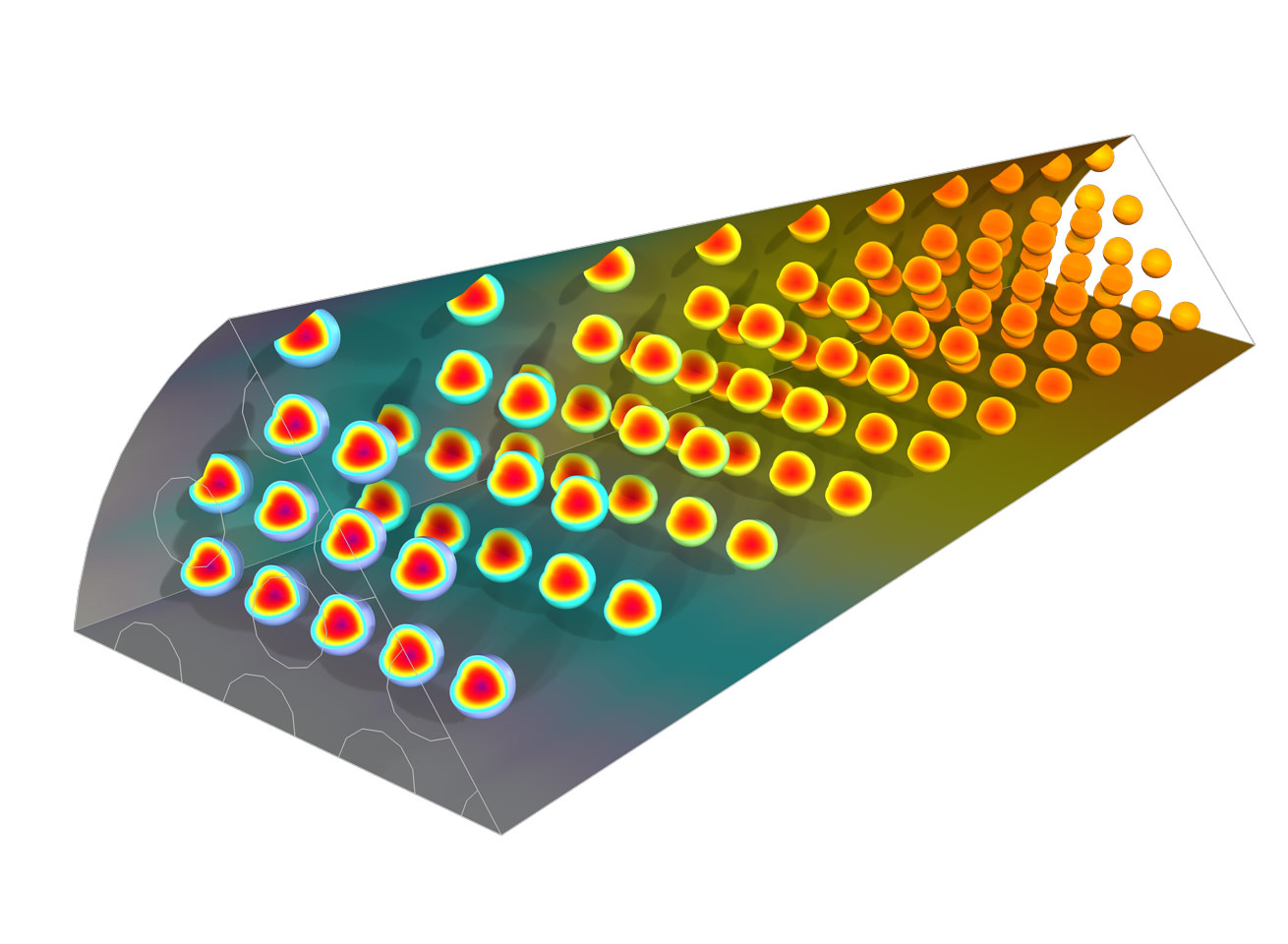support@comsol.com
Chemical Reaction Engineering Module Updates
For users of the Chemical Reaction Engineering Module, COMSOL Multiphysics® version 6.1 introduces a new Dispersed Two-Phase Flow with Species Transport multiphysics interface, a shrinking core model option for packed beds, and advanced chemical formulas. Learn more about these updates below.
Dispersed Two-Phase Flow with Species Transport
The ability to model chemical species transport and reactions in two-phase flow is greatly enhanced by the new Dispersed Two-Phase Flow with Species Transport interface. This new multiphysics interface describes chemical species transport between two phases consisting of liquid droplets or gas bubbles in a continuous liquid phase. This functionality can be used to model separation processes, such as liquid–liquid extractions and wet scrubbing of process exhaust gases. Such two-phase systems are common in both the bulk and fine chemical industries.
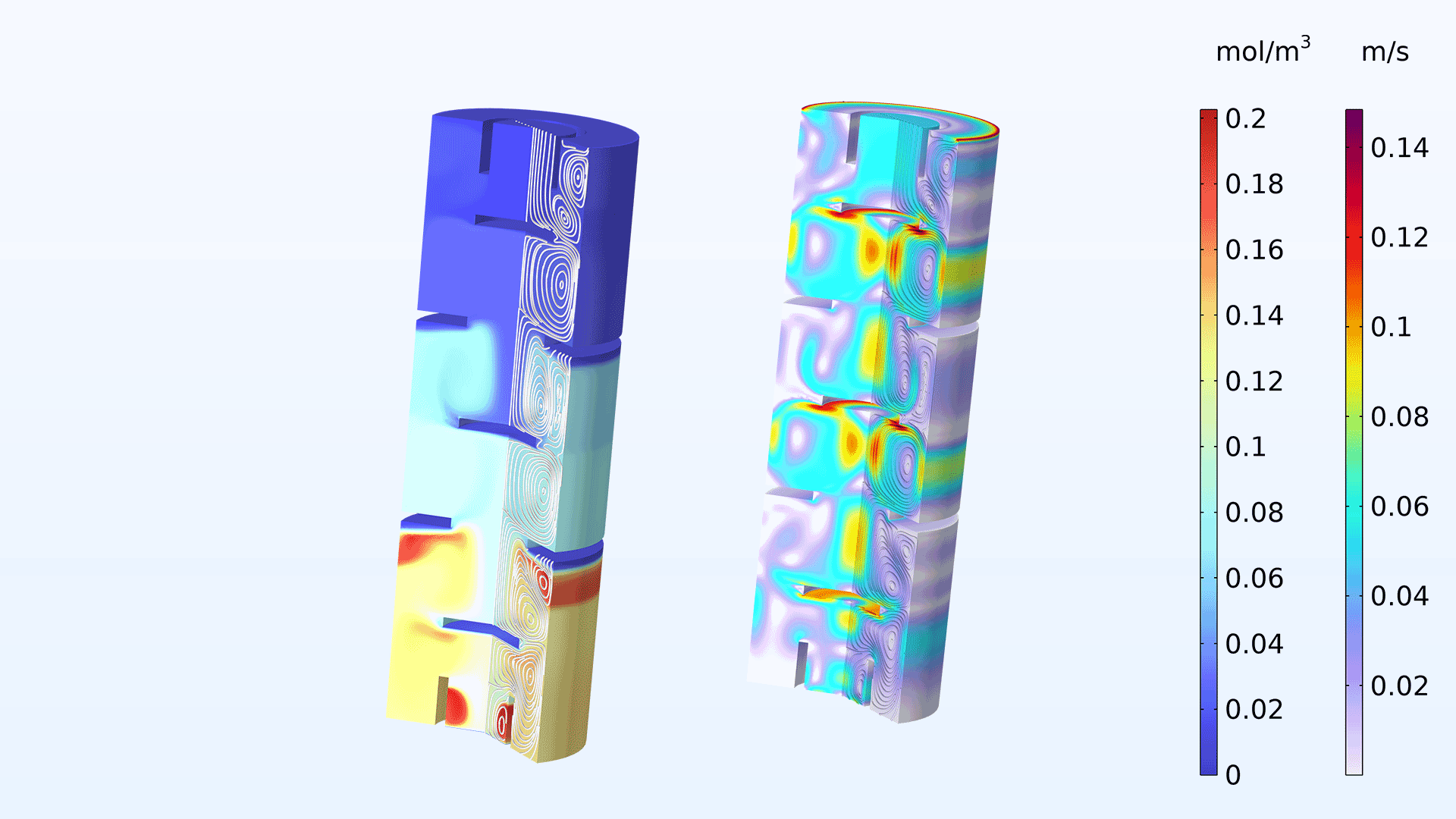
Shrinking Core Model for Packed Beds
Heterogeneous reactions in packed beds, with gas phase reactants combined with one solid reactant and one solid product, are often described by shrinking core models. In such processes, the heterogenous reaction starts at the outermost part of the solid particles. As the solid product is formed, the reaction zone moves inward toward the center of the particles, forming a shrinking core. The Packed Bed feature now includes a Shrinking Core model option that describes the solid reactant shrinking core and the diffusion of gas-phase reactants throughout the solid product's outer layer. This facilitates the modeling of processes such as the combustion of solid fuels with the production of an inert ash layer and the production of silicon oxide pellets (quartz) from silicon in silicon oxidation processes.
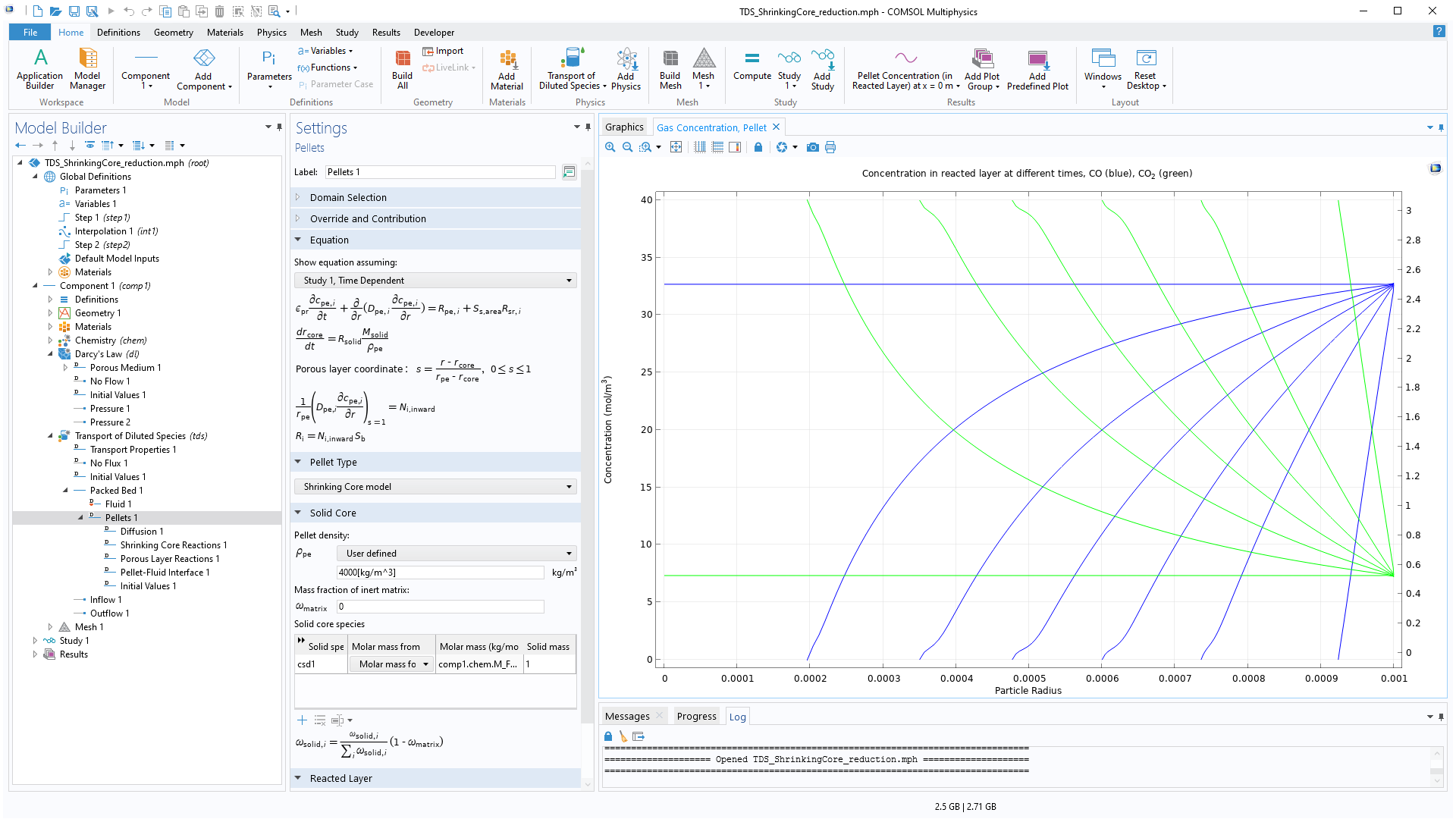
New Pellet Visualization
The new Pellet plot allows for simultaneous visualization of the reacting species in the bulk of the solution and inside the porous pellets. Using the new functionality, a flow of pellets or similar objects can be visualized as spheres or as three orthogonal, filled circles (slices).
Advanced Chemical Formulas
It is now possible to use more advanced formulas for chemical species and chemical reactions. The enclosing marks (),[], and {} can be used to indicate structural units in the molecular formula in a coordination complex, for example. To improve readability, simplified names can be used in the reaction formula to indicate an entire species or a part of the molecular structure. When reaction balancing is performed, the complete composition and charge is considered.
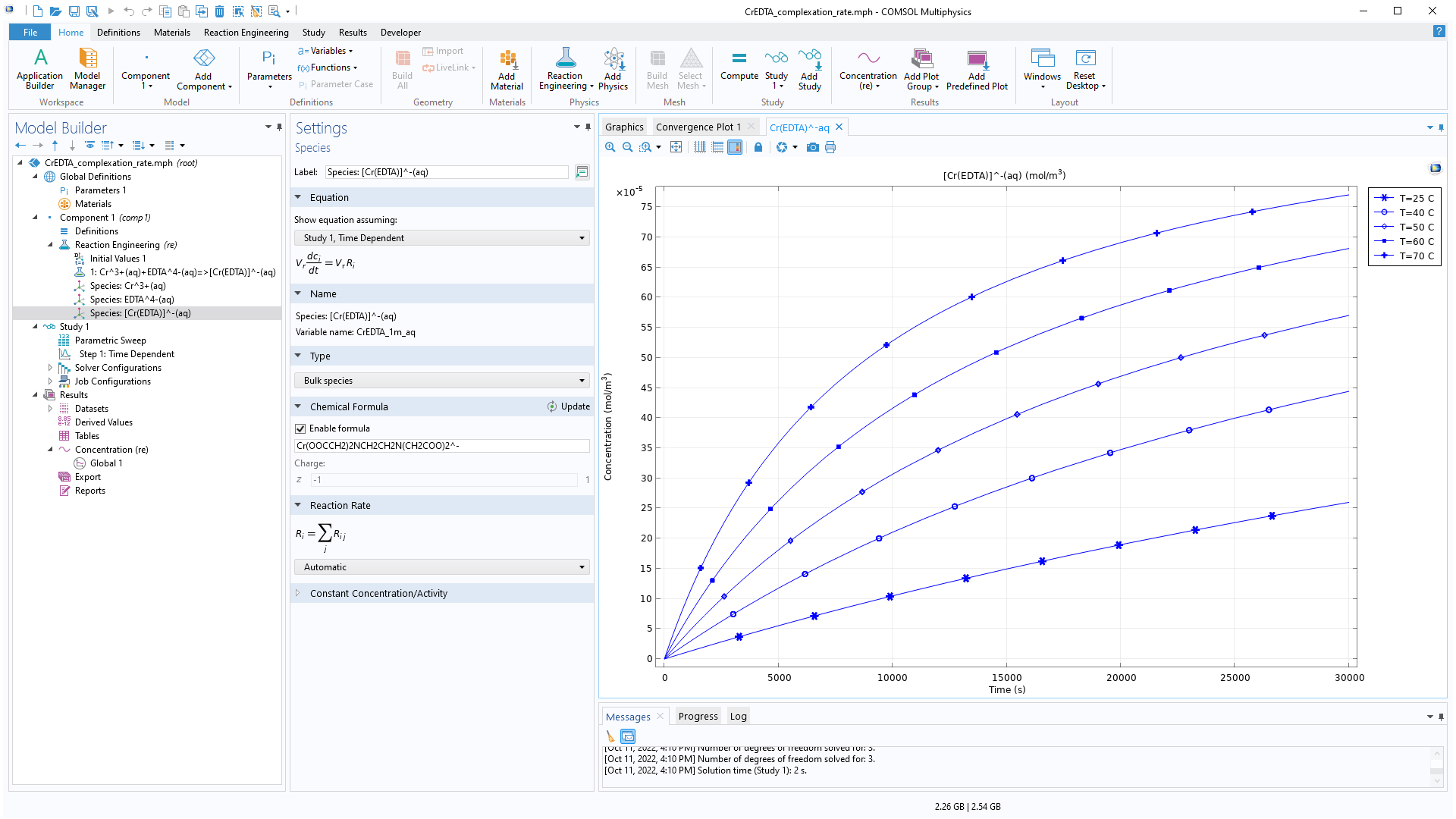
Improved Performance of Property Evaluations
The enhanced performance of property evaluations is noticeable in all property computations, such as density and viscosity, as well as for thermodynamic properties like heat capacity and vapor pressure. Models where a significant part of the solution time is spent performing property evaluations can now be solved in as much as 30% less time.
Improved Functionality for Adding Species to a System
The functionality to search for species in the database and add them to a model has been extended and improved. The species filtered from a search can now be added one at a time using the Enter key. In addition, it is no longer necessary to reset the filter result when a species has been added.
New Tutorial Models
COMSOL Multiphysics® version 6.1 brings three new tutorial models to the Chemical Reaction Engineering Module.
Evaporation of Ethanol and Water from a Wine Glass
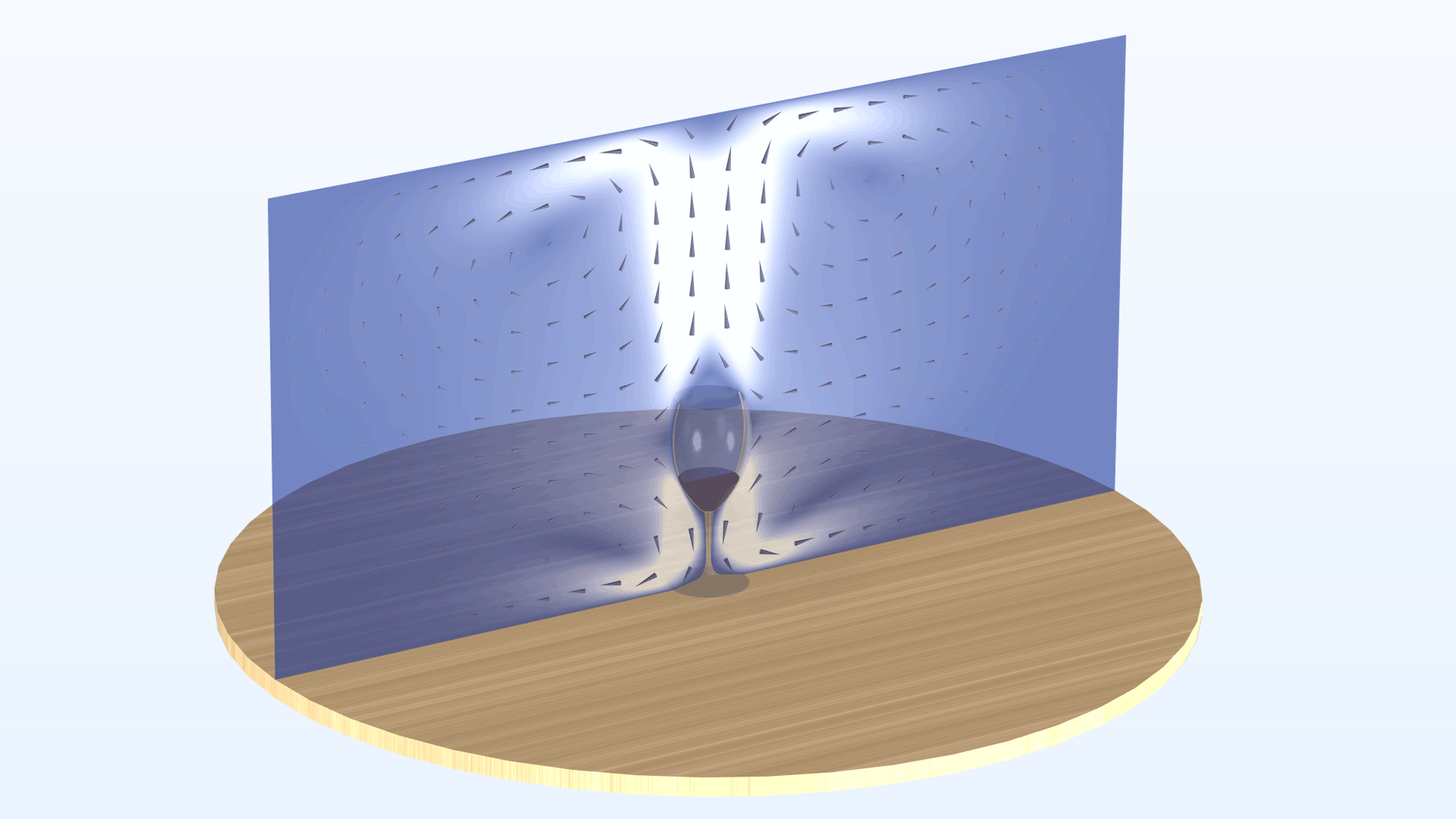
Application Library Title:
ethanol_water_evaporation
Download from the Application Gallery
Continuous Mixer
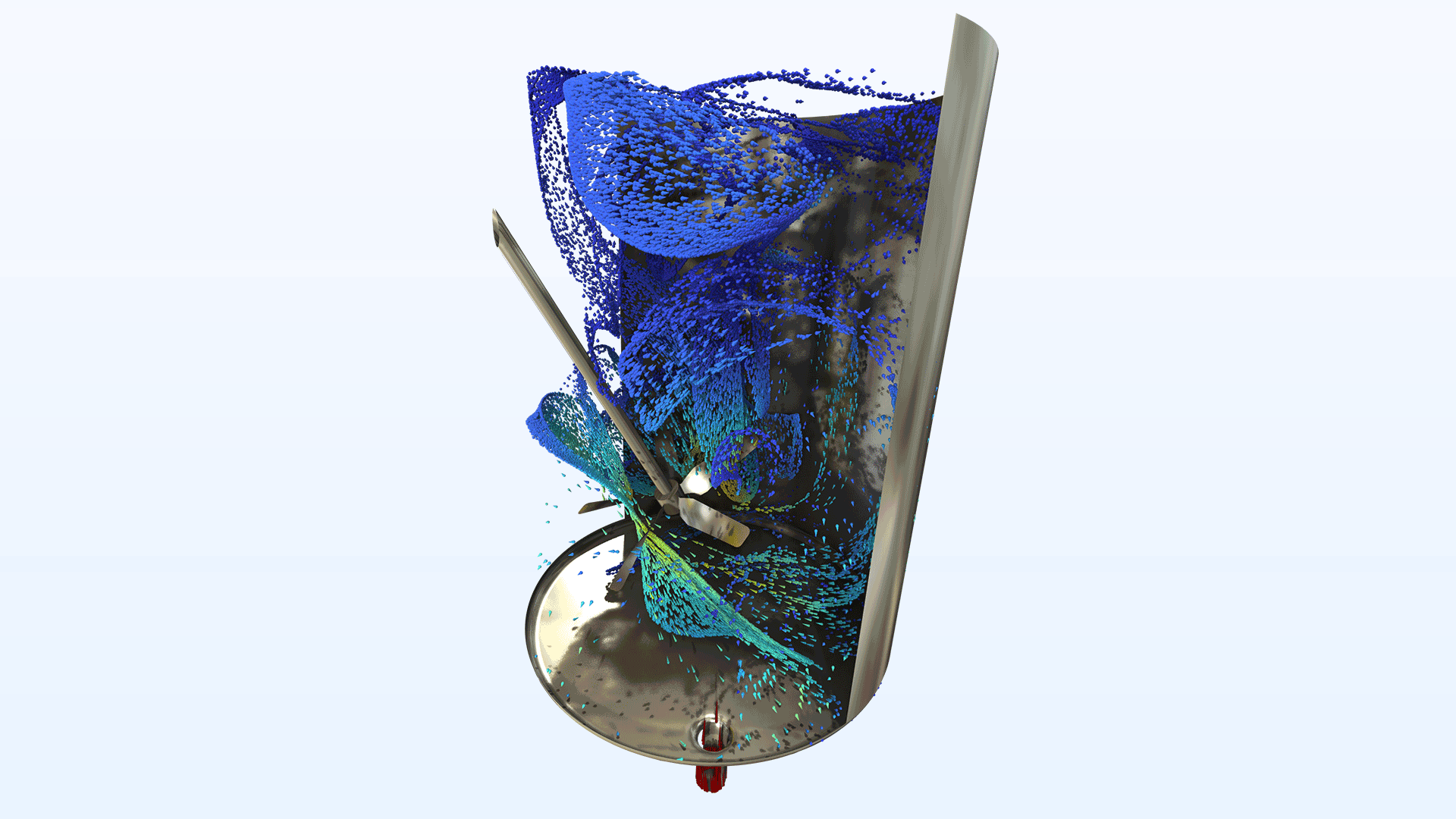
Application Library Title:
continuous_mixer
Download from the Application Gallery
Crystallization of Benzoic Acid in a Mixed Suspension, Mixed Product Removal Crystallizer
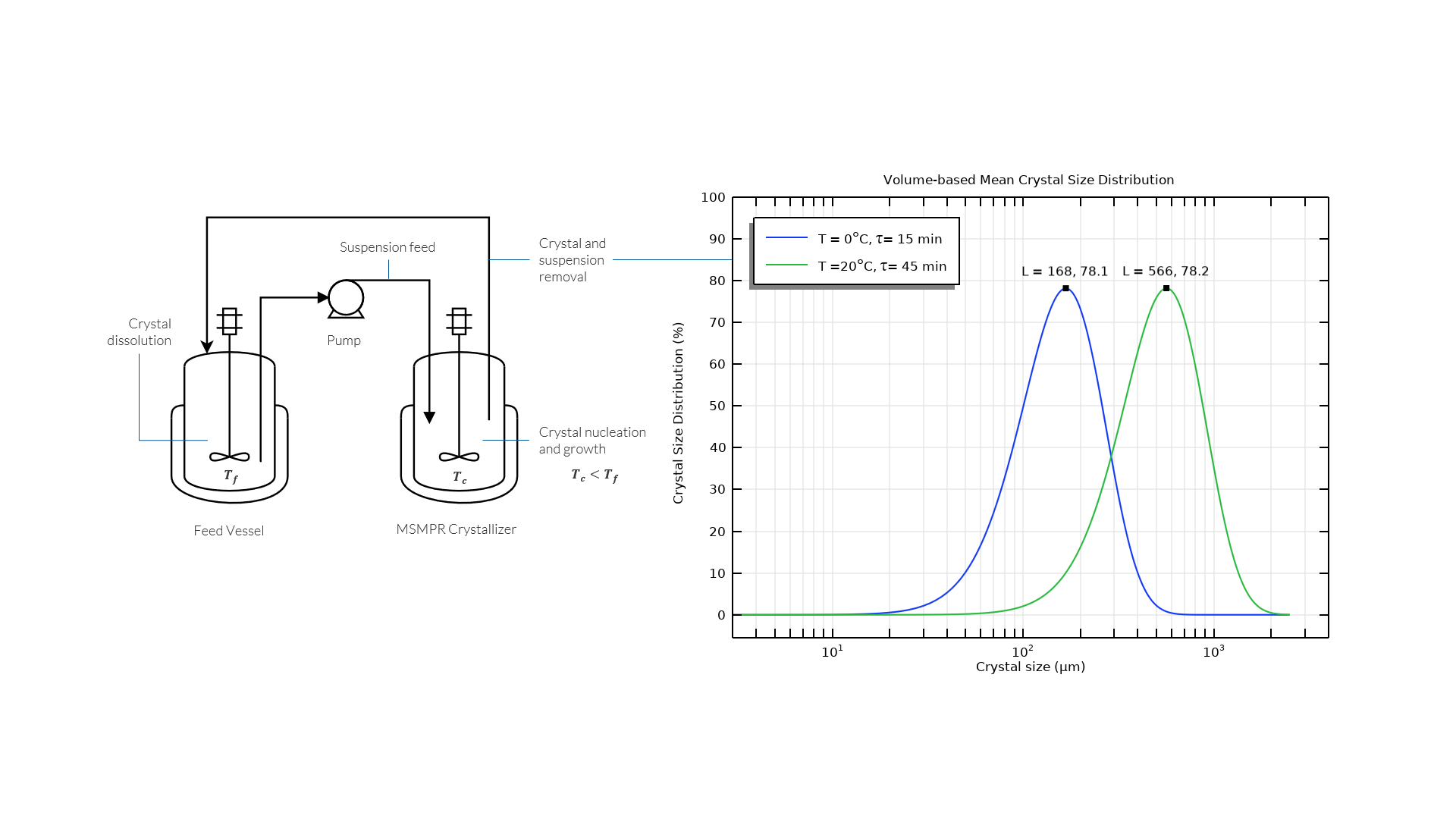
Application Library Title:
benzoic_acid_crystallization
Download from the Application Gallery

